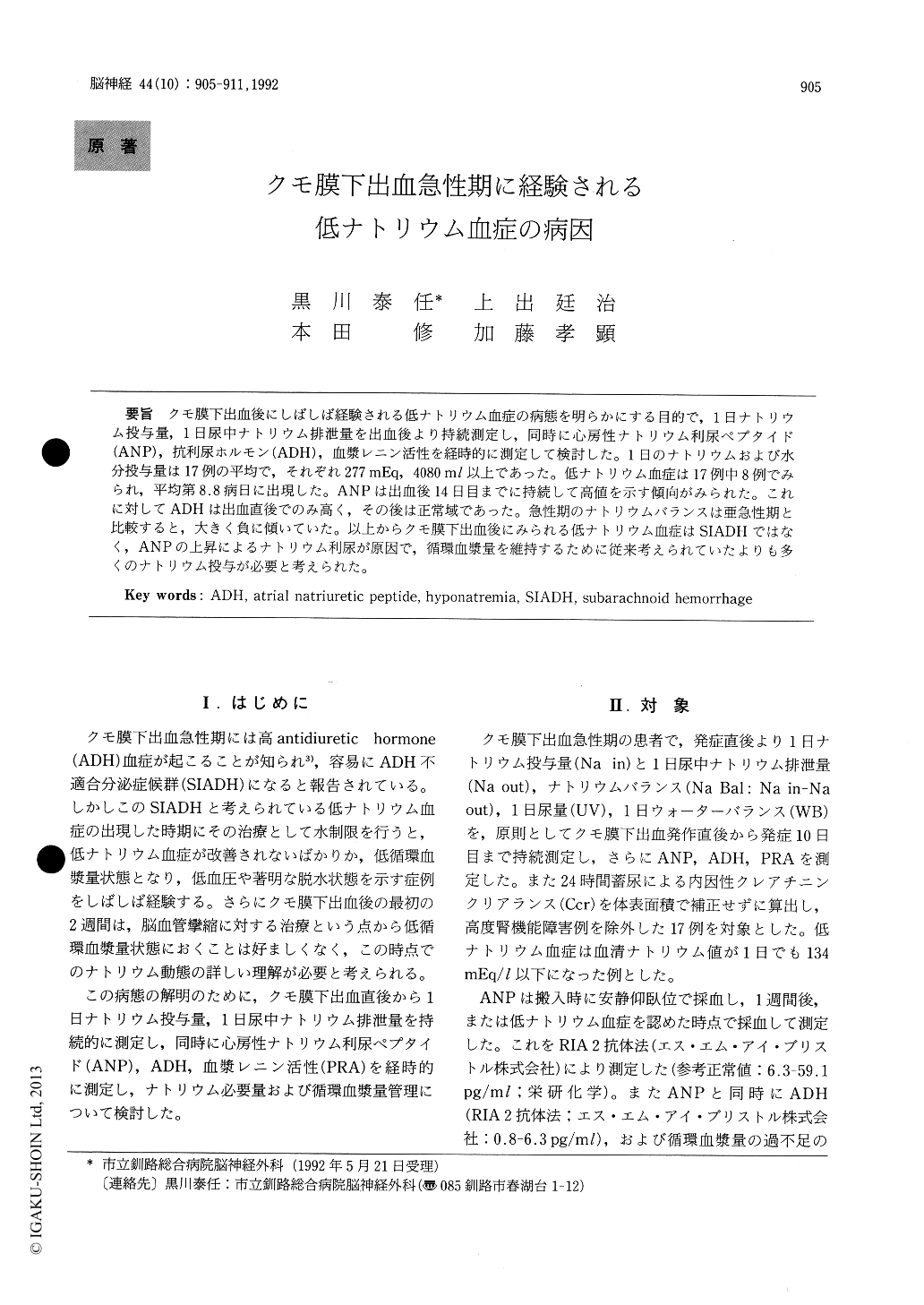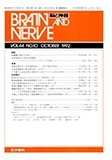Japanese
English
- 有料閲覧
- Abstract 文献概要
- 1ページ目 Look Inside
クモ膜下出血後にしばしば経験される低ナトリウム血症の病態を明らかにする目的で,1日ナトリウム投与量,1日尿中ナトリウム排泄量を出血後より持続測定し,同時に心房性ナトリウム利尿ペプタイド(ANP),抗利尿ホルモン(ADH9,血漿レニン活性を経時的に測定して検討した。1日のナトリウムおよび水分投与量は17例の平均で,それぞれ277mEq,4080ml以上であった。低ナトリウム血症は17例中8例でみられ,平均第8.8病日に出現した。ANPは出血後14日目までに持続して高値を示す傾向がみられた。これに対してADHは出血直後でのみ高く,その後は正常域であった。急性期のナトリウムバランスは亜急性期と比較すると,大きく負に傾いていた。以上からクモ膜下出血後にみられる低ナトリウム血症はSIADHではなく,ANPの上昇によるナトリウム利尿が原因で,循環血漿量を維持するために従来考えられていたよりも多くのナトリウム投与が必要と考えられた。
The cause of hyponatremia following subarach-noid hemorrhage (SAH) has been understood as aninappropriate secretion of antidiuretic hormone (SIADH). Whereas, water restriction for the man-agement of this condition sometimes induces a severe dehydration, resulting in vasospasm.
To clarify the pathogenesis of hyponatremia fol-lowing SAH, we measured the daily sodium and water balance with the plasma concentration of atrial natriuretic peptide (ANP), antidiuretic hor-mone (ADH), and plasma renin activity (PRA) in seventeen cases after subarachnoid hemorrhage.
Although the patients received an adequate amount of fluid (more than 4080ml/day ; daily average in seventeen cases) and sodium (more than 277 mEq/day; daily average in seventeen cases), eight out of the seventeen cases showed transient hyponatremia of a slight degree beginning on 8.8 days after SAH. ANP values were elevated marked-ly in fifteen out of the seventeen cases, remaining high during the first two weeks following SAH. ADH values were elevated remarkably in eight out of the seventeen cases. However, these values de-clined immediately to a normal range within two days following SAH. PRA were increased or came within the normal range, suggesting the lack of water retention.
Overall sodium balance and water balance did not differ significantly between hyponatremia cases and normonatremia ones, whereas, sodium balance in acute phase was significantly negative, associated with marked natriuresis in patients with hyponatremia. These correlations suggested that hyponatremia after SAH is the result of natriuresis by an increased ANP rather than ADH.
In conclusion, a greater replenishment of water and sodium is required to avoid hyponatremia with dehydration. This technique may be helpful for the prevention of vasospasms following SAH.

Copyright © 1992, Igaku-Shoin Ltd. All rights reserved.


